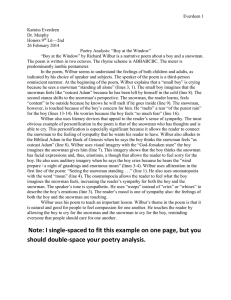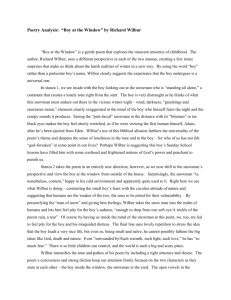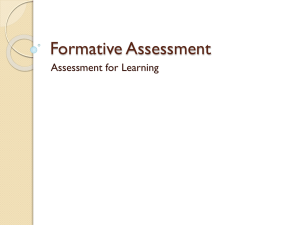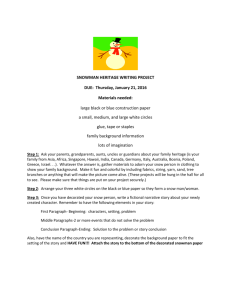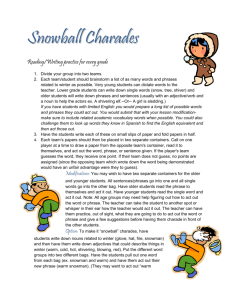Voldemort Lord Voldemort Dr. Murphy Honors 9th Lit—3rd 26
advertisement
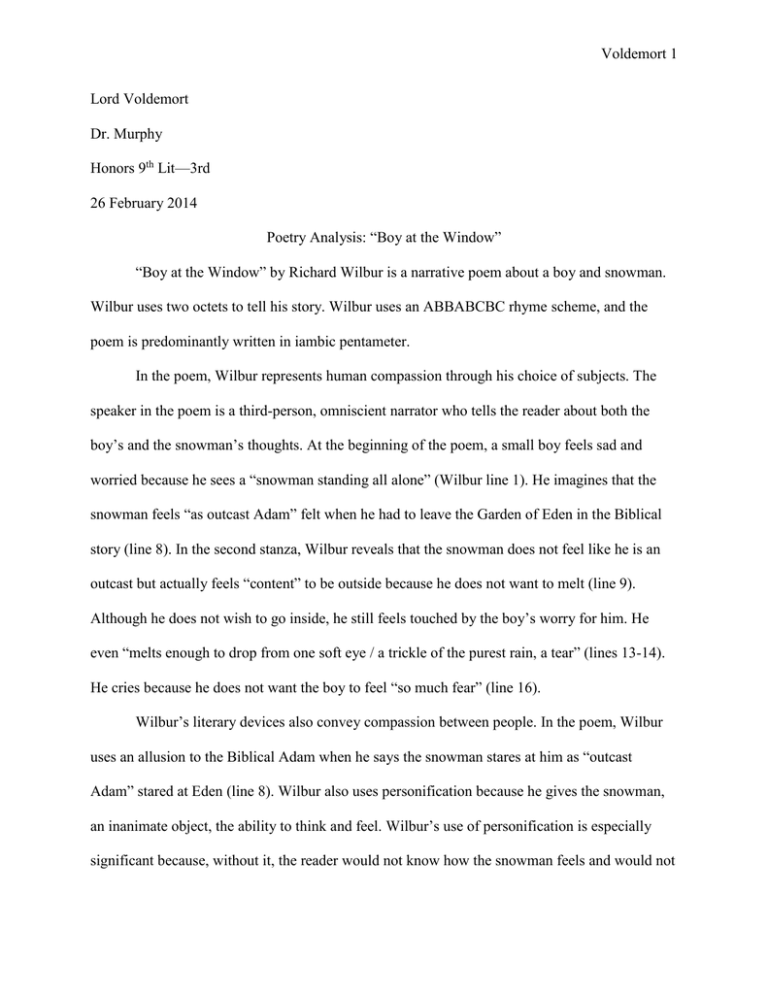
Voldemort 1 Lord Voldemort Dr. Murphy Honors 9th Lit—3rd 26 February 2014 Poetry Analysis: “Boy at the Window” “Boy at the Window” by Richard Wilbur is a narrative poem about a boy and snowman. Wilbur uses two octets to tell his story. Wilbur uses an ABBABCBC rhyme scheme, and the poem is predominantly written in iambic pentameter. In the poem, Wilbur represents human compassion through his choice of subjects. The speaker in the poem is a third-person, omniscient narrator who tells the reader about both the boy’s and the snowman’s thoughts. At the beginning of the poem, a small boy feels sad and worried because he sees a “snowman standing all alone” (Wilbur line 1). He imagines that the snowman feels “as outcast Adam” felt when he had to leave the Garden of Eden in the Biblical story (line 8). In the second stanza, Wilbur reveals that the snowman does not feel like he is an outcast but actually feels “content” to be outside because he does not want to melt (line 9). Although he does not wish to go inside, he still feels touched by the boy’s worry for him. He even “melts enough to drop from one soft eye / a trickle of the purest rain, a tear” (lines 13-14). He cries because he does not want the boy to feel “so much fear” (line 16). Wilbur’s literary devices also convey compassion between people. In the poem, Wilbur uses an allusion to the Biblical Adam when he says the snowman stares at him as “outcast Adam” stared at Eden (line 8). Wilbur also uses personification because he gives the snowman, an inanimate object, the ability to think and feel. Wilbur’s use of personification is especially significant because, without it, the reader would not know how the snowman feels and would not Voldemort 2 understand that Wilbur intends for his reader to understand his theme. Wilbur uses visual imagery to describe the snowman’s “tear” that comes from “one soft eye” (line 14, 13). He also uses auditory imagery when he says the boy cries “to hear the wind prepare / a night of gnashings and enormous moan” (lines 3-4). The use of the visual imagery makes the reader understand the deep compassion the snowman has for the boy. In the very first line, Wilbur uses a strong example of alliteration: “Seeing the snowman standing . . .” (line 1). Wilbur also uses onomatopoeia with the word “moan” (line 4). The word “moan” stands out as an extreme example of the boy’s imagination regarding how the snowman feels. The speaker’s tone in the poem is compassionate toward both the boy and the snowman: he uses the word “weeps” rather than “cries” or “whines” to describe the small boy’s actions in the first stanza (line 3). The mood is optimistic: the boy’s crying for the snowman and the snowman’s crying for the boy gives the reader a renewed sense of faith in humanity. Wilbur uses his poem to teach an important lesson. The poem’s theme is that humans naturally have compassion in the purest sense for one another. The fact that both the boy and the snowman care for others over themselves indicates that Wilbur wants the reader to accept his theme.
